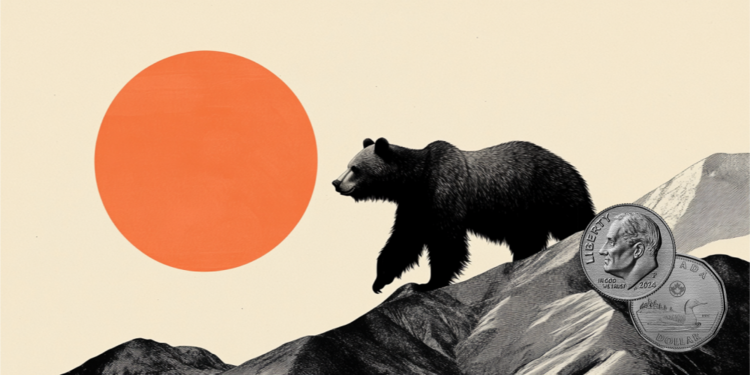Researchers from the Paleontological Research Support Center of the Fourth Colony (Cappa) at the Federal University of Santa Maria (UFSM) in Rio Grande do Sul have made an important discovery for global paleontology in the municipality of São João do Polêsine, in the central region of the state. In May, after heavy rains hit the state, causing flooding and destruction, they found a nearly complete fossil of a dinosaur from the Herrerasauridae group, which lived in the Triassic Period and is estimated to be 233 million years old.
“It is among the oldest in the world. So, it is already important because of the role it will play in understanding the origin of dinosaurs. But, in addition, it is almost complete and preserved. The material will provide a lot of anatomical information,” said paleontologist Rodrigo Müller, from UFSM.
“It is a carnivorous, bipedal animal, so it walked with its legs behind it and probably had its hands free to handle its prey. We cannot say that it had already reached its maximum size. Although it was 2.5 meters (m) long, individuals in this group reached up to 5 m or 6 m in length. Perhaps it could have grown more if it had not died at that time,” he reported.
The researcher highlighted that the animal is yet another addition to the Cappa collection, which, according to him, is one of the most important centers in the world for studying the origin of dinosaurs. “Here we have the main specimens from around the world. This is a material that will add to that and help us better understand these first dinosaurs. It is interesting that it is a predatory dinosaur. It brings new data from this first wave of dinosaurs that occupied the top of the food chain during the time of the origin of dinosaurs,” he said.
Müller led the UFSM Cappa team that conducted searches at the São João do Polêsine fossil site. “It was already a paleontological site that we had been excavating. There has been work there for at least two decades, but the rains accelerated the erosion process and revealed more materials,” he said.
The rains in May, which caused damage in Rio Grande do Sul, helped to expose the material. Now researchers are in a hurry to avoid losing other possible important discoveries and fossil fragments.
“The rain itself helps us throughout the year, exposing the fossils through the natural process of erosion. However, when we have a large volume, as happened this time, the materials that are exposed end up being destroyed quickly, sometimes during the event itself. If there is a lot of rain, small materials can be lost before we can get to them, so now we are rushing to recover all the exposed materials,” he said.
“We are monitoring and making constant visits now to recover everything. Most of the materials will be more fragmentary, isolated bones. This was the case of almost complete material, the rest is less complete material,” he added.
After being collected, the material was taken to Cappa to be analyzed by researchers. The work still has a long way to go. The expectation is that the study, as is done with scientific discoveries, will be published in a specialized publication.
“It will take us a few more months to extract it from the rock, which has to be done very carefully. After that, we will make comparisons, carry out investigations and publish it in the form of a scientific article, when the official release will be made,” he said, concluding that only after publication will the dinosaur fossil be named.
“We will try to identify it. And, if it is not a known animal, we will give it a new name, which generally refers to the animal, the place where it was found or even the name of a researcher who contributed to the discovery,” he explained.
Fragmented
The paleontologist said that when the fossil arrives more fragmented for analysis by researchers, it is usually the result of the past environment, where the animal died and the skeleton disarticulated. In this case, the identification work is more extensive so that comparisons can be made with other discoveries.
“Sometimes, a small part may have been removed by a butcher, and only one or two bones, more isolated materials, were preserved. So, it is unlikely that we will recover the rest for that individual. But with more incomplete fossils, when we study them, we need to supplement the information with related animals that have a degree of kinship, to understand what they were like,” he explained.
For the research, the fact that the discovery is of an almost complete fossil is a breakthrough because not many complete dinosaurs of this age are found in the world. “There are very few and almost all of them are here [na região central do Rio Grande do Sul]so it is a material that will provide a lot of information and serve to guide other studies. For example, if I find an isolated bone or something like that, I can compare it with this one and get a better idea of what that more incomplete animal is like. It serves as an anatomical source for us,” he said.
The paleontologist highlighted that another relevant discovery had been made in the region. It was the herbivorous dinosaur Macrocollum itaquii, dated to around 225 million years ago. “The first complete dinosaur in Brazil was also collected here. We started the excavation in 2012, at the end of the year, and finished at the beginning of 2013. The species was eventually published in 2018,” he said, adding that, although ancient, it is more recent than the one found this time, which is 233 million years old.
Age
According to Müller, the age of an animal is determined by the rock in which it is found, which is formed with the fossil when the animal is buried. “This sediment often carries some elements that can be dated. They need to be some radioactive elements. Then, we quantify its atomic weight and can determine its age. It is a complex calculation. It is not something that we can just go to the site and do right away. We have to do a whole analysis,” he said.
The region where the fossil was found is made up of the municipalities of Agudo, Dona Francisca, Faxinal do Soturno, Ivorá, Nova Palma, Pinhal Grande, Restinga Sêca, São João do Polêsine and Silveira Martins. It is part of the Quarta Colônia Geopark and, according to Cappa, is rich in paleontological material, with outcroppings of Triassic rocks, abundant in fossils of vertebrates, invertebrates, plants and trace fossils.
Source: CNN Brasil
I’m James Harper, a highly experienced and accomplished news writer for World Stock Market. I have been writing in the Politics section of the website for over five years, providing readers with up-to-date and insightful information about current events in politics. My work is widely read and respected by many industry professionals as well as laymen.







